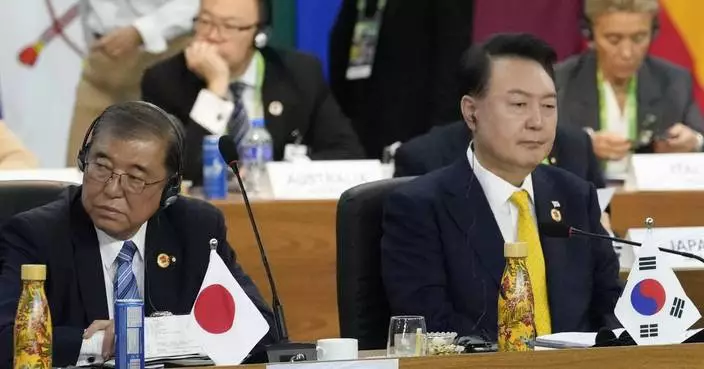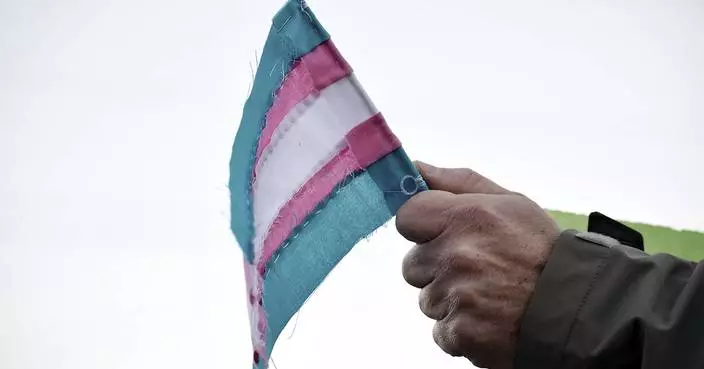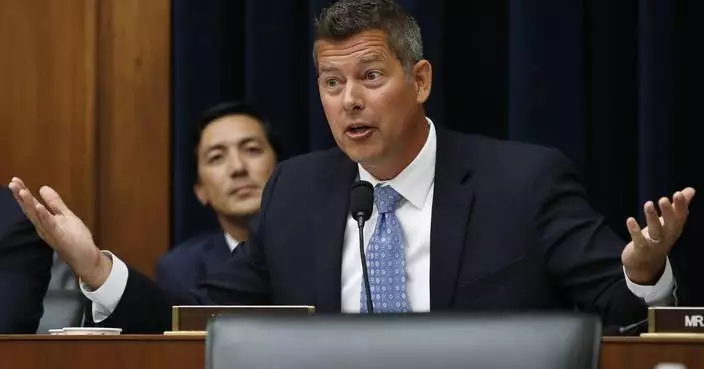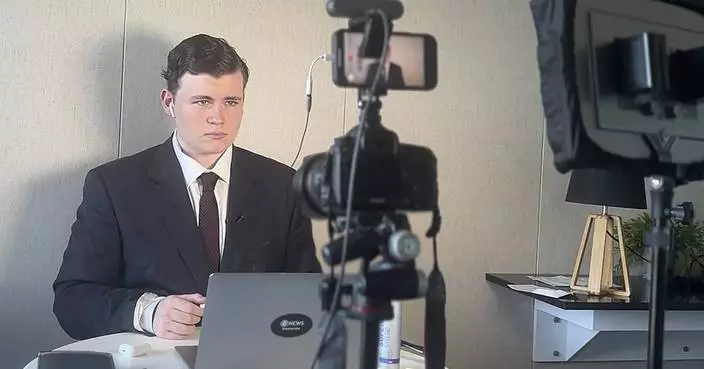SEOUL, South Korea (AP) — North Korea recently supplied additional artillery systems to Russia to support its war efforts against Ukraine, while some of the thousands of North Korean troops deployed in Russia have begun engaging in combat, South Korea’s spy agency told lawmakers Wednesday.
The South Korean assessment came after Russia warned Monday that U.S. President Joe Biden’s decision to let Ukraine strike targets inside Russia with U.S.-supplied longer-range missiles adds “fuel to the fire” of the war. U.S. officials said Biden’s decision was triggered almost entirely by North Korea’s entry into the war.
In a closed-door briefing at parliament, the National Intelligence Service said that North Korea exported 170mm self-propelled guns and 240mm multiple rocket launch systems to Russia, according to lawmaker Lee Seong Kweun, who attended the meeting.
Lee told reporters that the NIS assessed those weapons are a type of artillery the Russian military doesn’t operate so North Korea likely dispatched personnel to teach the Russians how to use them and handle their maintenance.
Last week, Russian Telegram channels and other social media posts published photos apparently showing North Korean’s “Koksan” 170mm self-propelled guns being moved by rail inside Russia. The Financial Times, citing Ukrainian intelligence assessments, reported Sunday that North Korea in recent weeks sent some 50 domestically produced 170mm self-propelled howitzers and 20 240mm multiple launch rocket systems to Russia.
The artillery systems are the latest conventional weapons that North Korea is believed to have provided to Russia as the two countries are sharply expanding their military cooperation in the face of separate confrontations with the U.S. and its allies. Last month, the NIS said that North Korea had sent more than 13,000 containers of artillery, missiles and other conventional arms to Russia since August 2023 to replenish its dwindling weapons stockpiles.
During its Wednesday briefing, the NIS said that an estimated 11,000 North Korean soldiers in late October were moved to Russia’s Kursk region, where Ukrainian troops seized parts of its territory this year, following their training in Russia's northeast, Lee said. He cited the NIS as saying the North Korean soldiers were assigned to Russia’s marine and airborne forces units and some of them have already begun fighting alongside the Russians on the frontlines.
The U.S., Ukraine and others have similar estimates on the size of North Korea's troop deployment. They say the North Korean soldiers arrived in Russia in October and that some of them have since engaged in combat in the Kursk region. Observers say North Korea's participation in the almost 3-year war threatens to escalate the conflict.
Park Sunwon, another lawmaker who was present at the NIS meeting, made similar comments on the briefing. He said the spy agency couldn’t provide an assessment on possible North Korean casualties.
Moscow said Tuesday that Ukraine fired six U.S.-made ATACMS missiles at Russia’s Bryansk region, in what would be Kyiv’s first use of the weapon inside Russia. Ukraine’s General Staff did not confirm whether the weapon was used, but said the armed forces struck an ammunition warehouse in the Bryansk region, which neighbors Kursk and was likely supplying Russian forces fighting there.
Since the first year of the war, Ukrainian leaders have lobbied Western allies to allow them to use advanced weapons to strike key targets inside Russia.

FILE- In this undated photo provided on Sunday, Oct. 6, 2024, by the North Korean government, North Korean leader Kim Jong Un, center, visits to watch an artillery exercise at an undisclosed place in North Korea. Independent journalists were not given access to cover the event depicted in this image distributed by the North Korean government. The content of this image is as provided and cannot be independently verified. Korean language watermark on image as provided by source reads: "KCNA" which is the abbreviation for Korean Central News Agency. (Korean Central News Agency/Korea News Service via AP, File)
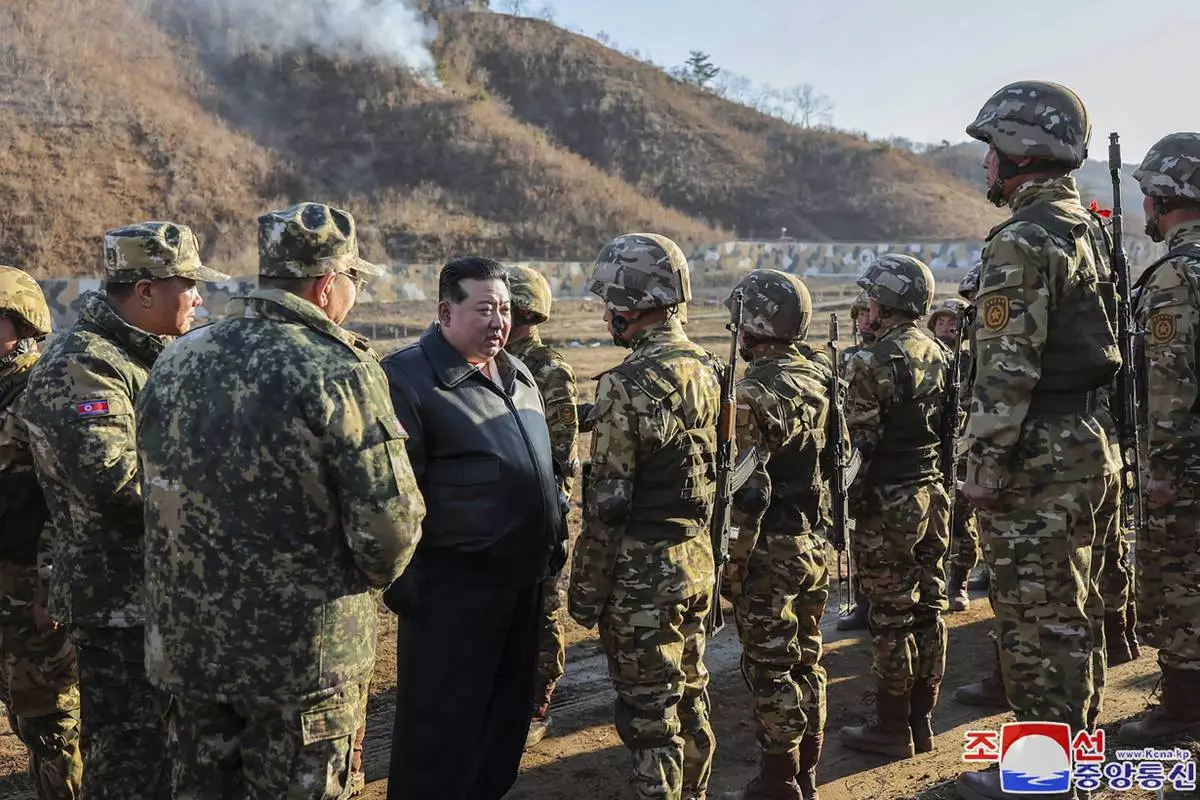
FILE - In this photo provided by the North Korean government, North Korean leader Kim Jong Un, center left, meets soldiers during a visit to a western operational training base in North Korea Wednesday, March 6, 2024. Independent journalists were not given access to cover the event depicted in this image distributed by the North Korean government. The content of this image is as provided and cannot be independently verified. Korean language watermark on image as provided by source reads: "KCNA" which is the abbreviation for Korean Central News Agency. (Korean Central News Agency/Korea News Service via AP, File)
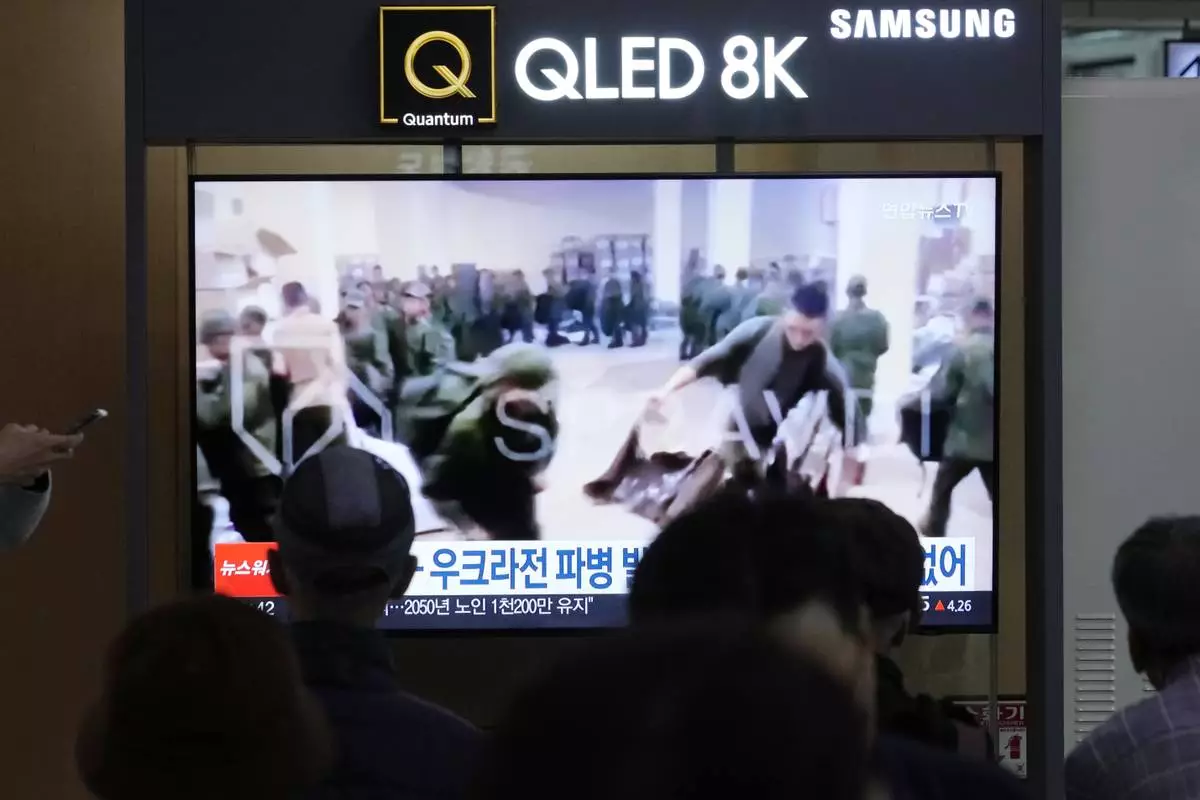
FILE - A TV screen shows an image of soldiers believed to be from North Korea stand in line to receive supplies from Russia during a news program at Seoul Railway Station in Seoul, South Korea, on Oct. 21, 2024. (AP Photo/Ahn Young-joon, File)
BAKU, Azerbaijan (AP) — With time running down, negotiators at the United Nations annual climate talks on Wednesday returned to the puzzle of finding an agreement to bring far more money for vulnerable nations to adapt than wealthier countries have shown they're willing to pay.
Pressure was building to drive a deal by the time COP29, as this year's summit is known, concludes this week. COP29 President Mukhtar Babayev asked negotiators to clear away the technical part of talks by Wednesday afternoon so they can focus on substance.
That substance is daunting. Vulnerable nations are seeking $1.3 trillion to deal with damage from climate change and to adapt to that change, including building out their own clean-energy systems. Experts agree that at least $1 trillion is called for, but both figures are far more than the developed world has so far offered.
Half the world away in Rio, Brazil, where the Group of 20 summit was wrapping up on Tuesday, the United Nations Secretary-General Antonio Guterres told the group of the world’s largest economies that “the success of COP29 is largely in your hands.”
“That goal, the financial goal, in its different layers, must meet the needs of developing countries, beginning with a significant increase in concessional public funds,” he said.
And the president of Brazil, Luiz Inácio Lula da Silva, said developed nations should consider moving their 2050 emission goals forward to 2040 or 2045.
“The G20 is responsible for 80% of greenhouse effect emissions,” he said. “Even if we are not walking the same speed, we can all take one more step.”
Negotiators are fighting over three big parts of the issue: How big the numbers are, how much is grants or loans, and who pays. The “how big” question is the toughest to negotiate and will likely be resolved only after the first two are solved, COP29 lead negotiator Yalchin Rafiyev told The Associated Press in an interview Tuesday.
“There are interlinkages of the elements. That’s why having one of them agreed could unlock the other one,” Rafiyev said.
“All presidencies must at this point show that they have what it takes to move from administration to leadership," German climate envoy Jennifer Morgan said. "They must set the expectation for ambitious outcomes across the board. ... It is now up to the presidency to ensure that we move at full speed towards a green future.”
The current goal of $100 billion annually was set in 2009. Rich potential donor nations have so far been reluctant to offer a starting figure to replace that. Rafiyev said the conference presidency has sought to pressure them, telling them that the figure should be "fair and ambitious, corresponding to the needs and priorities of the world.”
India’s junior environment minister Kirti Vardhan Singh, who is at the Baku talks, said that “the Global South are bearing a huge financial burden.”
“This is severely limiting our capacity to meet our developmental needs,” he said.
The European Union is expected to finally offer a figure, likely ranging from $200 billion to $300 billion annually, Linda Kalcher, executive director of the think tank Strategic Perspectives, said Tuesday.
That wasn't enough for Debbie Hillier, climate policy lead for the humanitarian group Mercy Corps, who called it “wildly out of step with the needs of developing countries” and a failure by richer nations to live up to the agreement of the 2015 Paris climate talks.
“If $200-300 billion is indeed the ballpark for what developed countries will offer, then this is a betrayal — a betrayal of the communities around the world who, whilst least responsible for climate change, are bearing its most devastating consequences," she said.
Some wealthy nations were talking of loans that could be leveraged to attract other money — grants, more loans and private investment — to multiply the funds they can offer.
But poorer nations say they are already drowning in debt and most money should come in the form of grants.
Whatever the form of the finance, Ireland’s environment minister Eamon Ryan said it would be “unforgivable” for developed countries to walk away from negotiations in without making a firm commitment toward developing ones.
“We have to make an agreement here,” he said. "We do have to provide the finance, particularly for the developing countries, and to give confidence that they will not be excluded, that they will be center stage.”
The Associated Press’ climate and environmental coverage receives financial support from multiple private foundations. AP is solely responsible for all content. Find AP’s standards for working with philanthropies, a list of supporters and funded coverage areas at AP.org.

Activists participate in a demonstration for climate finance at the COP29 U.N. Climate Summit, Wednesday, Nov. 20, 2024, in Baku, Azerbaijan. (AP Photo/Peter Dejong)
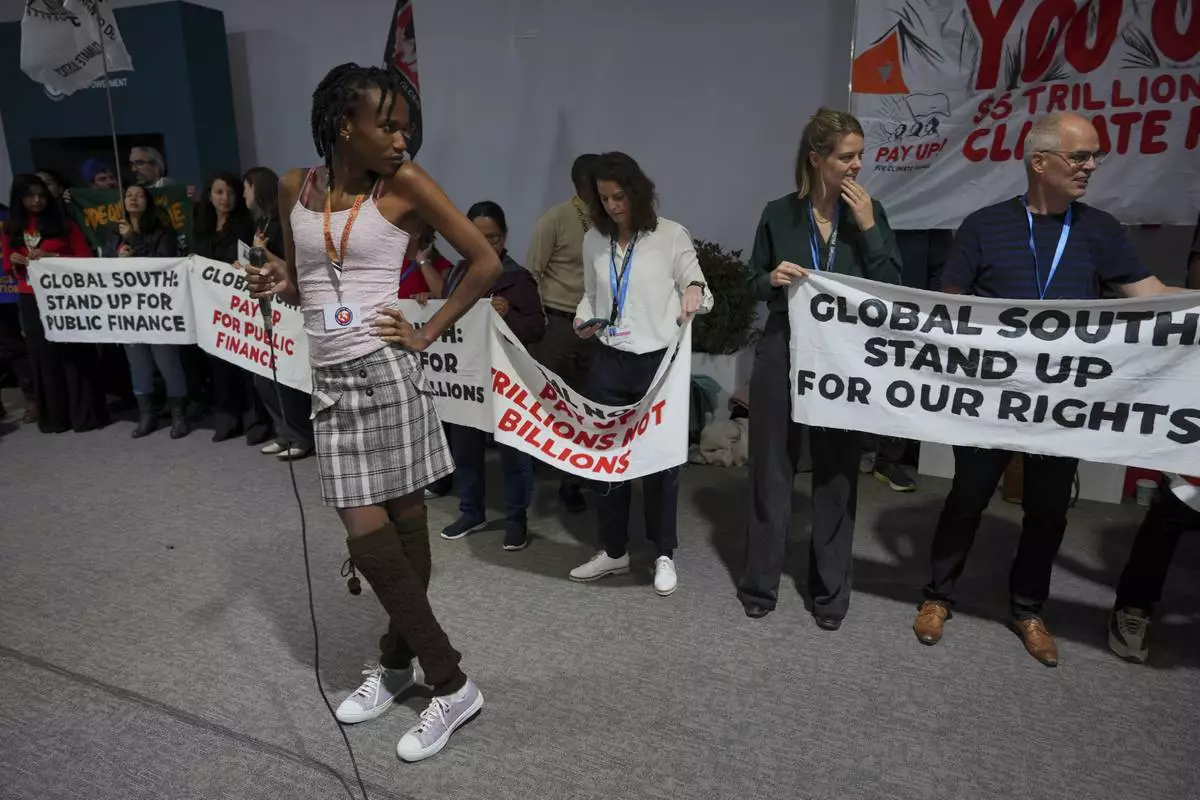
Activist Erica Njuguna leads a demonstration with signs reading "Global South: stand up for public finance" at the COP29 U.N. Climate Summit, Wednesday, Nov. 20, 2024, in Baku, Azerbaijan. (AP Photo/Peter Dejong)
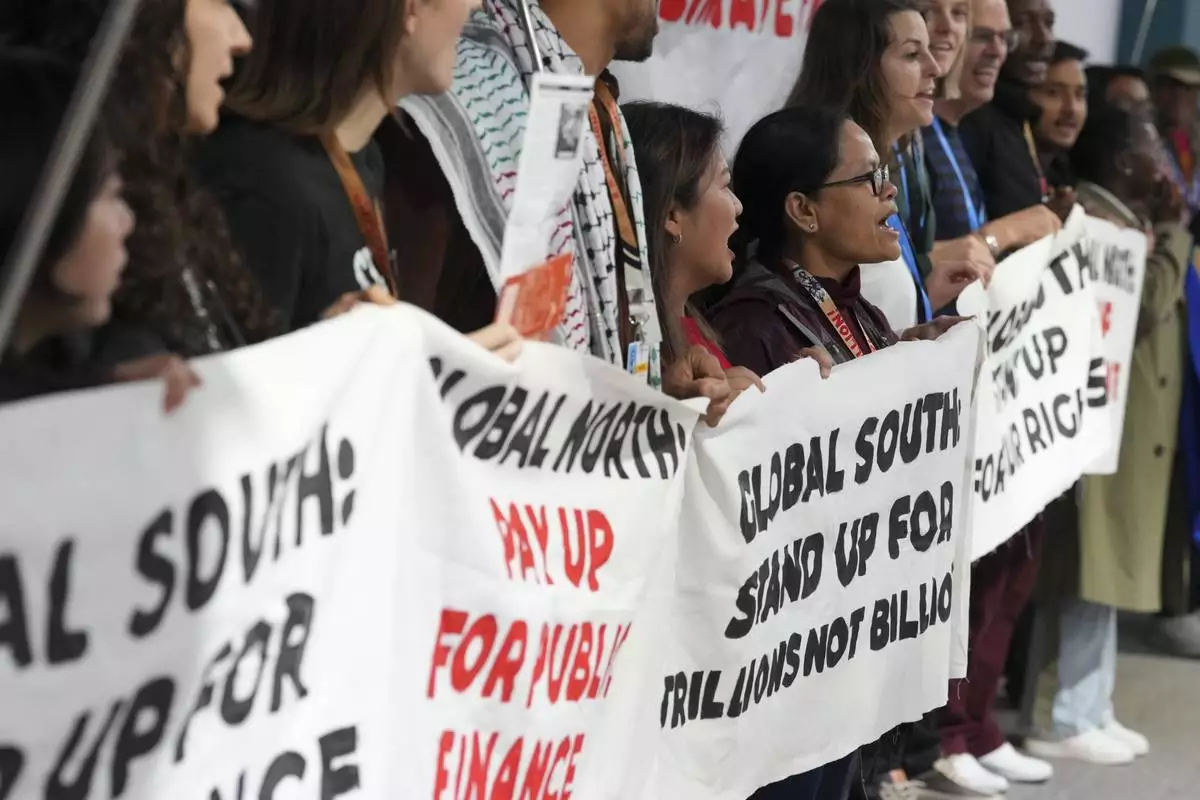
Activists participate in a demonstration for climate finance at the COP29 U.N. Climate Summit, Wednesday, Nov. 20, 2024, in Baku, Azerbaijan. (AP Photo/Peter Dejong)










